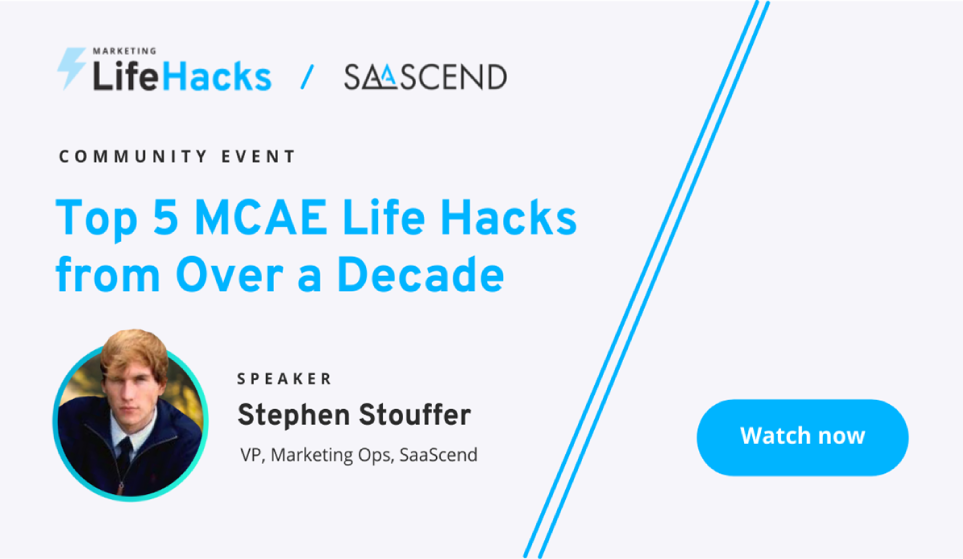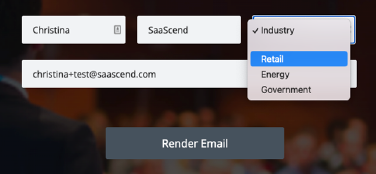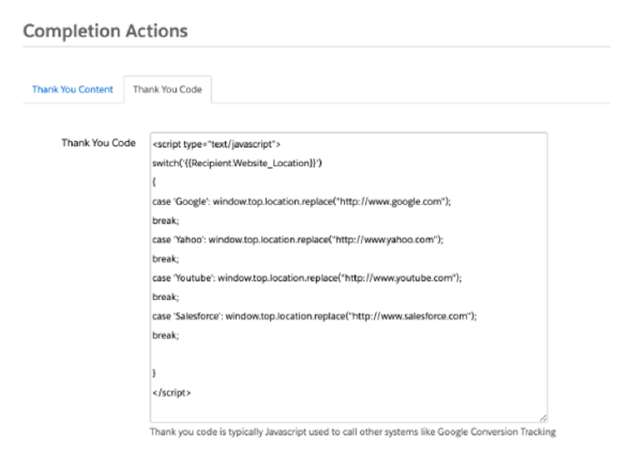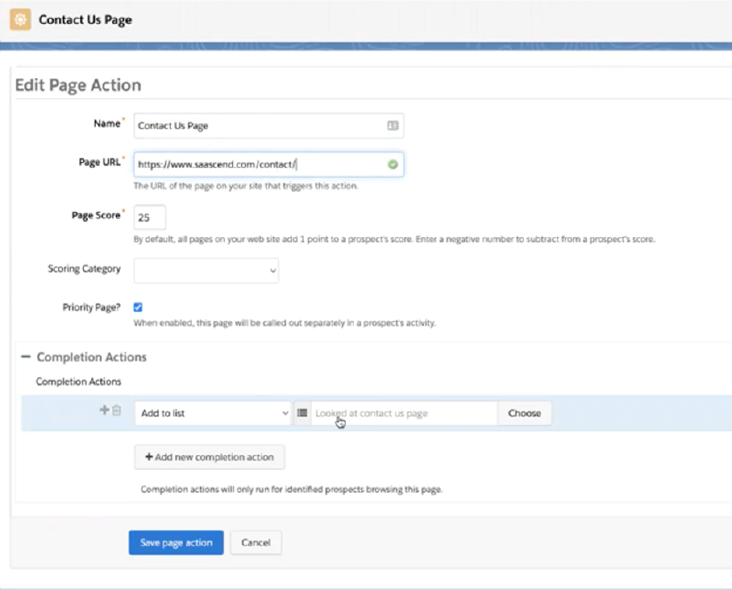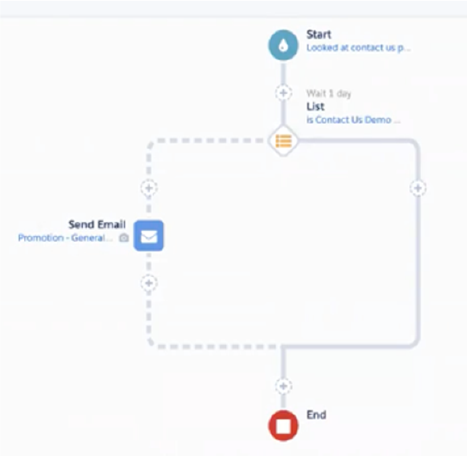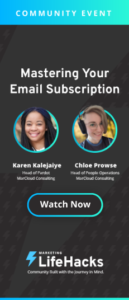A life hack is a tip or a trick that is meant to help you execute a routine task more easily and efficiently. What routine marketing automation tasks are you doing that are either taking up too much time, or not getting the results that you want? To help fellow marketers create more personalized experiences, better manage data, and facilitate more conversions, the VP of Marketing Operations at SaaScend, Stephen Stouffer, shared his top five Marketing Cloud Account Engagement (Pardot) life hacks with the Marketing Life Hacks community, which are summarized below.
1. Creating Personalized Experiences with Dynamic Content
It is not a secret. Personalization helps to win more business.
94% of companies experienced a rise in conversion rates after personalizing their websites (Econsultancy). While 59% of customers say tailored engagement based on past interactions is very important to winning their business (Salesforce). Which means, it is critical to create personalized experiences for prospects.
However, this can seem daunting and a lot of work, but with quality data, Marketing Cloud Account Engagement (MCAE) makes it possible to dynamically change headings, paragraphs, images, and call-to-actions, for emails, forms, and landing pages, based on prospect field data.
To see this in action, Stephen created interactive dynamic content modules for marketers to test out submitting different responses to field data and witness the content change for a more personalized experience.
For example, the email module changes the content based on the First name, Company, and the industry provided. Notice how when “Retail” is selected for the Industry field versus when “Energy” is selected. The email banner changes from shopping bags to wind mills and then there is a direct call out to the industry in the header over the image. The header in the body of the email also updates to address the recipient by their first name and company.
Using dynamic content in conjunction with your Account Based strategy helps to prioritize your personalization efforts while also ensuring that your ideal target audience experiences a customized engagement that is relevant to their demographic and firmographic profile. Creating dynamic content for every buyer would take up a lot of your team’s time, so focusing on the types of relevant engagements you want to create to give your target accounts a white glove experience is where your team can create the most impact.
We witness the use of MCAE dynamic content in action as the email banner changes based on the industry selected along with the First Name and Company of the prospect.
2. Data Posts From Forms
Have you ever collaborated with a partner for a webinar or a sponsored event? What is the process for updating each other on the latest registrations? Are there a lot of exporting csv files?
With Stephen’s second life hack, this no longer has to happen. By inserting the below script in the Thank You code section of your MCAE form, you can share the data captured from the form to Slack, a Google Sheet, a second database or Zapier!
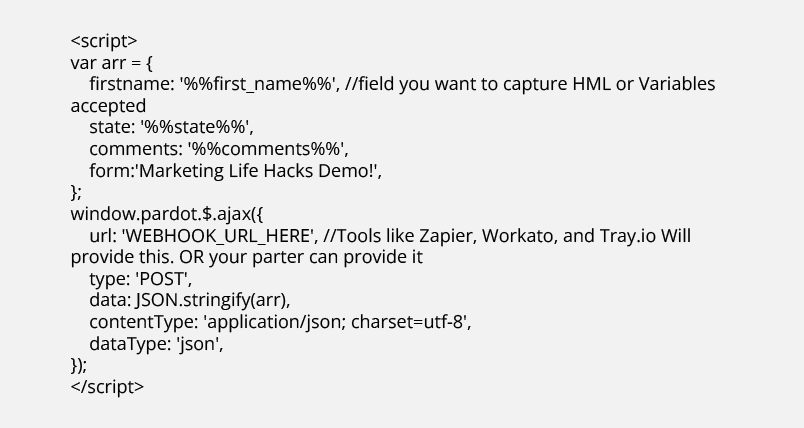
This is all demonstrated live in his interactive microsite for learning MCAE and the one reminder he provides is to “update the field ID and values you’d like to capture for” in the above script.
3. Field Based Redirects
The community has been waiting for conditional completion actions for quite some time and finally got their wish with the announcement of the Spring ‘22 release, but what if you could create this effect today? With Stephen’s third life hack you can!
Using the script shared from the microsite, marketers can insert it into the Thank You code of the MCAE form and then based on the value they choose for the identified controlling field, they can decide where the prospect is redirected to. As Stephen put it, “one page = multiple destinations”.
The Thank You code script used on an MCAE form for a field based redirect.
Similar to the prior Thank You Code supplied for the “Data Posts from Forms” life hack, Stephen reminds trailblazers to “update the field ID and values you’d like to listen for!”
There are some great use cases for this that were highlighted during his session. The first being for a demo form. What happens when a prospect that is not in your ICP and has a D grade submits to your demo form? Rather than sending them immediately over to sales to schedule a 1:1 meeting, what if you had the prospect redirected to a demo video?
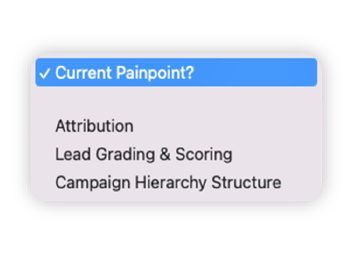
The field that controls the experience that the prospect has once they submit to the form, based on the pain point they identify.
The use case that Stephen provides in his interactive module on the microsite is around a pain point identified by the prospect. For example, if attribution is selected, the person is redirected to SaaScend’s Ultimate Guide for Campaign Attribution. If Lead Scoring and Grading is selected, they are redirected to the on demand fireside chat, Solving the Top Marketing to Sales Lead Hand-off Challenges.
Field based redirects and soon, conditional completion actions, open a world of possibilities for marketers to create better personalized experiences based on their buyer profile and where they are in their journey.
- Engagement Studio for Data Correction
For every marketer, their personalization, reporting, and insights, are only as good as their data. Therefore routine data management tasks are essential, but can be time consuming, especially for organizations with a large database.
For data cleanup jobs that would take several Automation Rules, Stephen demonstrated with his fourth life hack that Engagement Studio (ES) can do it with one program. The use case modeled here involves updating data for state field errors, abbreviations and misspellings, to help mitigate sync errors between Salesforce and MCAE. For example, if an organization needed the date field to be spelled out versus abbreviated, they can listen for if a prospect’s State field is TX, if yes, then change it to Texas.
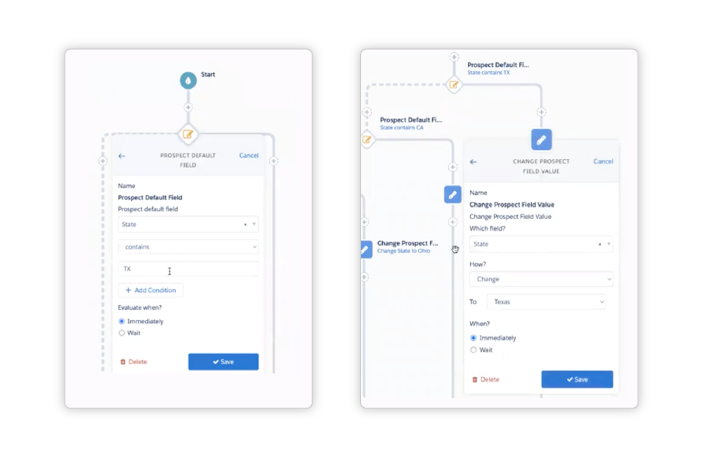
A demonstration of Engagement Studio being used to correct State field data from an abbreviation to being fully spelled out.
This same idea can also be applied for updating legacy Job Title data to a dropdown picklist Role field, for easier marketing segmentation. There is so much that can be done to help save marketers time with automation using ES. The question is, what processes are you doing manually or with multiple Automation Rules right now that could be done with one ES program?
5. Last, But Not Least, Page Actions for Abandon Cart
If you shop on Amazon, or any other online store, chances are there are items that are in your cart that you have not yet purchased. According to Baymard Institute, the average cart abandonment rate is 70%. Meaning that there is money left on the table 70% of the time.
MCAE has a Page Actions feature that marketers can use to flag when a prospect has visited the cart page recently. This can be applied to any high priority page for businesses that are not in the Ecommerce industry, which is where Stephen’s fifth life hack comes in. He demonstrated how Page Actions can be used to trigger automation for when a cookied prospect visits the contact us page, but then never submits.
The first step is to set up the Page Action with the URL of the high priority page, in this case, the contact us page. Then create the Completion Action of Add to List : Looked at contact us page.
The second step is to add a Completion Action onto the Contact Us form, Add to List : Contact Us Form Submission.

The last step is to use the two lists with an Engagement Studio program.
An example of a short Abandon Cart program using Engagement Studio.
The entry trigger is for any prospect that is on the list “Looked at Contact us page”. The program then waits one day to check if the prospect is on the “Contact Form Submission List”. If they are not, the program sends an automated email.
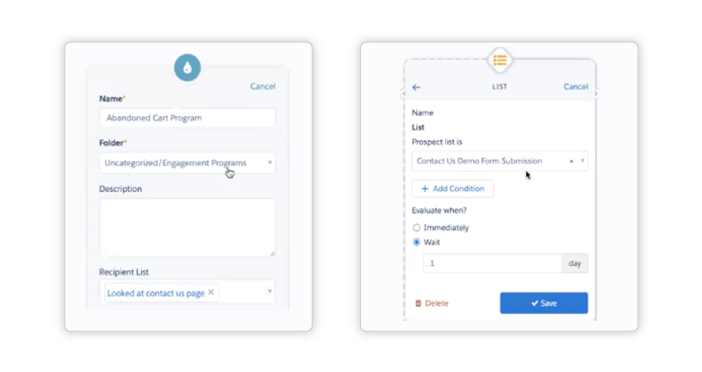
The entry list and the evaluation of the Abandon cart program in Engagement Studio. The program waits one day after the prospect has viewed the Contact Us page to see if they have not submitted to the form, before sending them the follow up email.
Which begs the question, how many prospects are currently visiting your high priority pages and not converting? How many of them would convert into the pipeline if they were followed up with? Identify your own “abandon cart” experiences with your team, create your programs, and look to see how many more conversions you can trigger.
Gear for the Journey
To experience these life hacks in action, visit Stephen’s microsite that he built entirely on the MCAE platform to help marketers learn how to better leverage its features to create personalized experiences, streamline data management, and drive more conversions.

250 RECORDS FREE
Achieve Accurate Contact Data with Job Change Tracking

